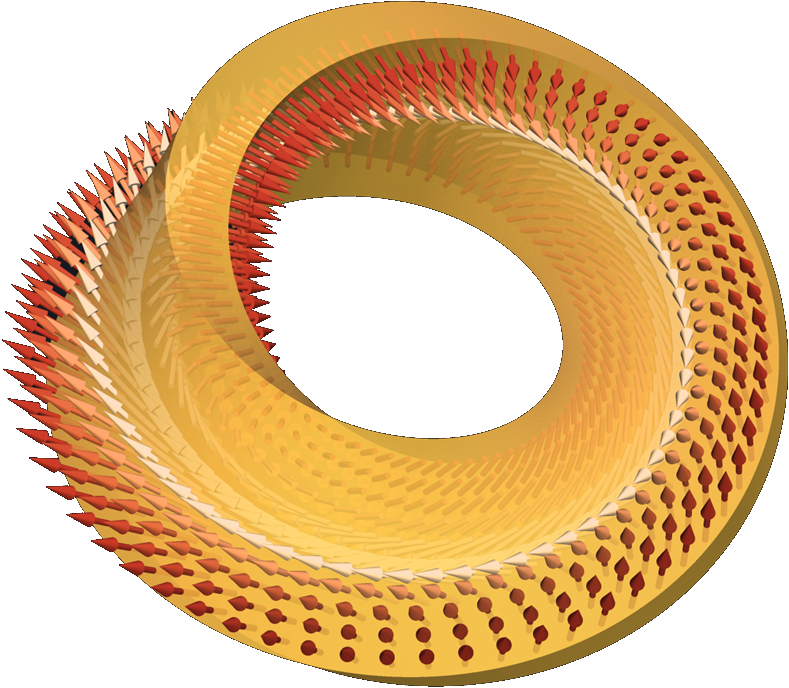Speaker
Description
Spin-wave propagation in ferromagnetic nanotubes is fundamentally different than in flat thin films as shown recently [1]. The dispersion relation is asymmetric regarding the sign of the wave vector. As a consequence, spin waves traveling in opposite directions have different wavelength. This purely curvature induced effect originates from the dipole-dipole interaction, namely from the dynamics dipolar volume charges. Such non-reciprocal spin-wave propagation [2] is known for flat thin films with interfacial Dzyalonshiinsky-Moriya interaction or for crystals with a special symmetry (C$_{\text{nv}}$) and bulk Dzyalonshiinsky-Moriya interaction. Here, we will discuss in a nanotube with circular cross section the effect of the individual terms of the divergence on the spin-wave dispersion, through results obtained by finite element micromagnetic simulations. The divergence terms in the cylindrical coordinate system together with the term depending on the mean curvature leads to different asymmetries of the dispersion. We show, that spin waves in nanotubes have chirality or handedness. If the magnetisation in the nanotube is helical, it is also shown that the cylindrical waveguide will also have handedness. This scenario can be compared to that well known from optics: a circular polarised light traveling in a polariser media. We will emphasise the importance of the mean curvature and show that by tailoring it the asymmetry of the dispersion relation can be tuned or even suppressed. It can be concluded that the curvature induced magnetochiral effect with magnetostatic origin can be switched on and off by the manipulation of the surface curvature.
[1] J.A. Otálora, et. al., Phys. Rev. Lett. 117, 227203 (2016).
[2] K. Zakeri, et. al., Phys. Rev. Lett. 104, 137203 (2010).

